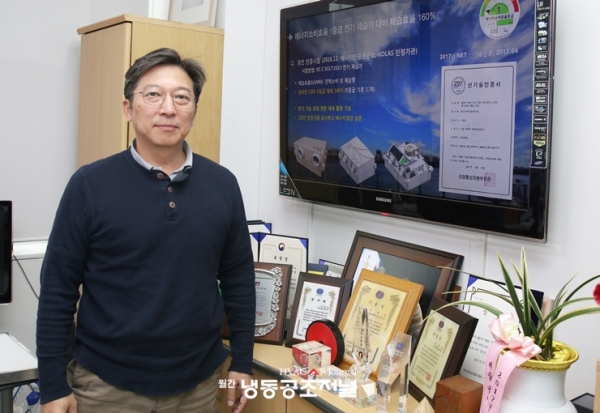
Humicon by Humaster Co., Ltd. (CEO Dae-Young Lee) integrates multiple functions: dehumidification, energy recovery ventilation, deodorization, air purification, and cooling, which can be selectively applied depending on usage needs.
Humicon is based on the desiccant dehumidification principle, but unlike conventional desiccants such as silica gel or zeolite, it applies a newly developed super-hygroscopic polymer. This advancement overcomes traditional material limitations, enabling a superior system in terms of performance, efficiency, functionality, and structural stability.
Although Humicon resembles conventional desiccant systems in that moisture is absorbed by the desiccant and regenerated with heat, it differs significantly in principle. By using a dehumidification rotor based on SDP (developed with domestic technology), it provides humidity control that allows cooling and ventilation without relying on air conditioners or excessive cooling. Thus, it is a hybrid dehumidification system that ensures indoor comfort.
As the demand for energy recovery efficiency in ventilation grows, Humicon addresses the structural and material limitations of traditional enthalpy exchange-based dehumidification systems. While existing systems required ≥70% efficiency in winter and ≥45% in summer to obtain high-efficiency energy certification, Humicon achieved 79% in winter and 71.5% in summer, earning official certification.
Humicon, a humidity-control-based air conditioning system by Humaster, was chosen as one of the “Top 10 Mechanical Technologies of the Year” by the Korean Federation of Mechanical Engineering Societies.
CEO Dae-Young Lee emphasized: “Humicon maintains consistently high dehumidification performance year-round, achieving over 70% energy recovery efficiency in both summer and winter. It operates with low noise, minimal heat emission, and a bacteria-resistant internal structure—making it the only dehumidifying ventilation system of its kind in Korea.”
Q. Thoughts on being selected as one of the Top 10 Mechanical Technologies?
“It is a tremendous honor for the entire Humaster team to receive such a prestigious award in our very first year of business. This recognition is both an encouragement and a responsibility. We will strive to create new industries and quality jobs based on this technology, repaying the trust and support shown to us.”
Q. Why was Humicon chosen?
“Humicon is short for humidity conditioning, Humaster’s trademark. It represents a fusion of advanced polymer material science and mechanical engineering, creating an air conditioning system based on humidity control rather than temperature alone. Our proprietary polymer material and the application of the relatively new desiccant technology helped us stand out.”
Q. Can you introduce Humaster?
Humaster Co., Ltd. is a KIST (Korea Institute of Science and Technology) spin-off company, founded on KIST’s breakthrough research. KIST developed a desiccant-based cooling technology that uses heat instead of electricity, reducing air conditioner power consumption by more than 50%. This technology has been transferred to Korea District Heating Corporation and is now being commercialized.
Building on the core team and technology behind this development, Humaster is pursuing a paradigm shift in air conditioning through humidity control.
Q. What differentiates Humaster from competitors?
Our strength lies in the world’s best polymer-based material and engineering expertise. This material is:
Because it is polymer-based, it is easier to manufacture, process, and mold than ceramic-based desiccants like silica gel, allowing for cost competitiveness. Additionally, desiccant-based systems have been limited by their nonlinear and complex design challenges, slowing commercialization worldwide. KIST developed solutions to overcome these issues, forming the foundation of Humaster’s technological edge.
Q. What motivated Humicon’s development?
As Korea’s summers grow hotter and more humid due to subtropical climate shifts, cooling systems alone cannot properly manage humidity. Air conditioners often overcool indoor spaces because humidity forces the system to cycle repeatedly, wasting energy and reducing comfort.
Portable cooling dehumidifiers have also failed because they release hot exhaust air that raises room temperature. With global demand for cooling increasing but concerns about electricity use, costs, and side effects (e.g., “air-conditioning sickness”) growing, it became clear that temperature-based air conditioning was outdated.
Humaster sought a breakthrough solution, leading to the development and commercialization of Humicon.
Q. What does the name Humicon mean?
Humicon is Humaster’s registered trademark. It combines Humidity and Conditioner, meaning “Humidity Conditioning.” Unlike conventional dehumidifiers or cooling-based air conditioners, it is based on humidity control, making it a new category of air conditioning technology.
Q. How is Humicon different from conventional ventilation systems?
While Humicon can be installed in standard ventilation positions and offers energy recovery ventilation, it is not merely a ventilation unit. It is a multi-functional residential air handling unit with primary functions in humidity-control-based air conditioning, as well as air purification, deodorization, antibacterial/antifungal effects, and energy recovery ventilation.
Unlike cooling-based dehumidifiers, Humicon provides hybrid dehumidification (desiccant + cooling) without overcooling or raising room temperature, greatly outperforming conventional systems.
Q. What is the core technology?
Traditional cooling-based dehumidification lowers temperature excessively because moisture condenses on cold surfaces, forcing users to switch the AC on and off repeatedly in rainy summer months. This inefficiency reflects the inherent limits of legacy AC technology (unchanged since Carrier’s 1902 invention).
In contrast, Humicon uses desiccant dehumidification (via hygroscopic polymers such as silica-gel alternatives), which avoids this problem. The key lies in combining high-performance absorption materials with advanced engineering design. Humaster holds both, giving it world-class competitiveness.
Commercial products are already installed and operating in Humaster’s headquarters, Jeju Herjima, Damma Korea, and commercial buildings in Hanam City.
Q. Future product development plans?
Q. What is Humaster’s vision?
Humicon can be applied across B2B, B2C, and industrial markets, both domestically and globally.
Potential overseas markets include Southeast Asia, Central Africa, Latin America, Europe, and the U.S., especially in climates where radiant heating/cooling is prevalent.
Humaster’s mission is to become the world’s leading humidity-control company, leading the paradigm shift from temperature-based cooling to humidity conditioning, while delivering both optimal comfort and top-tier energy efficiency.
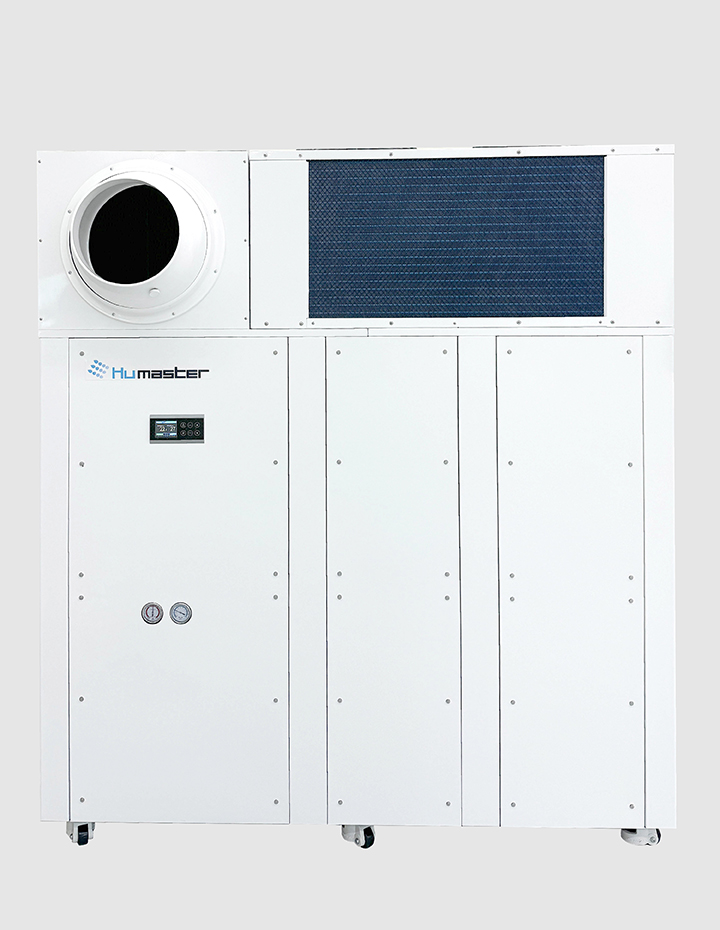
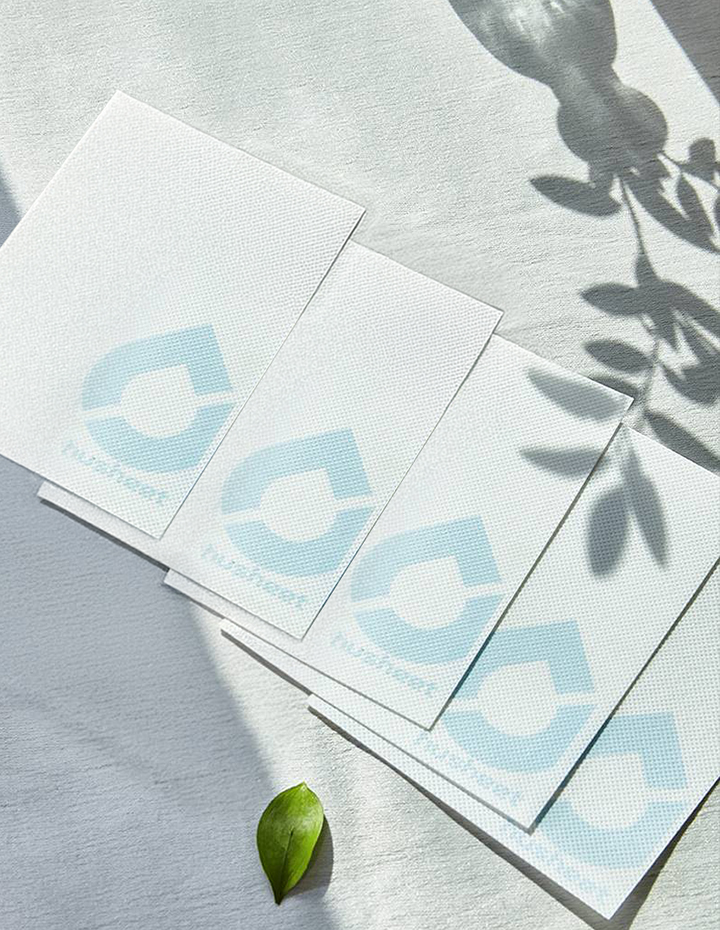
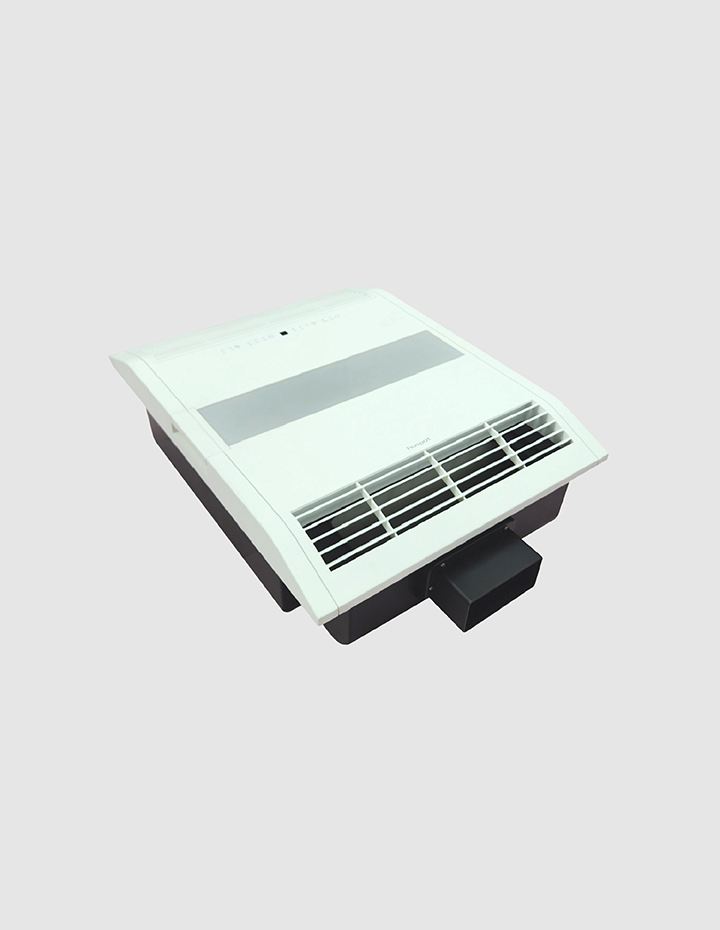
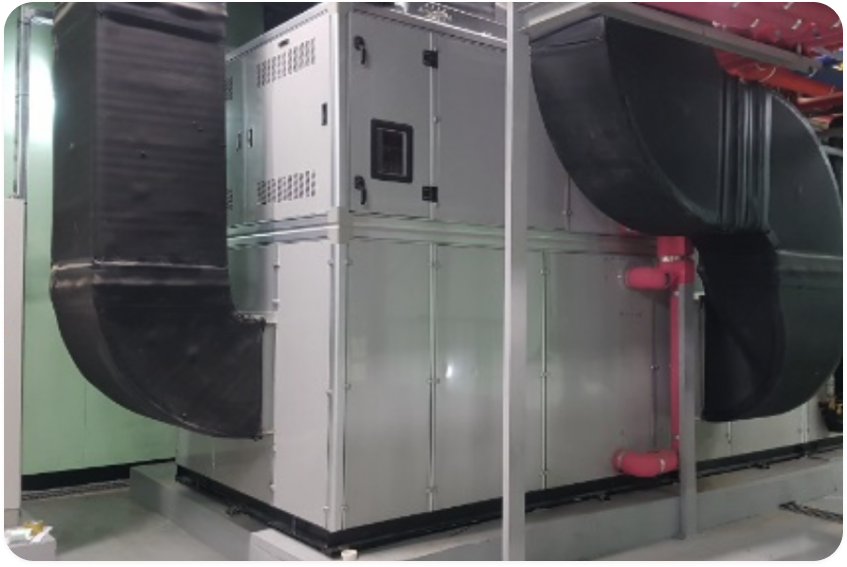
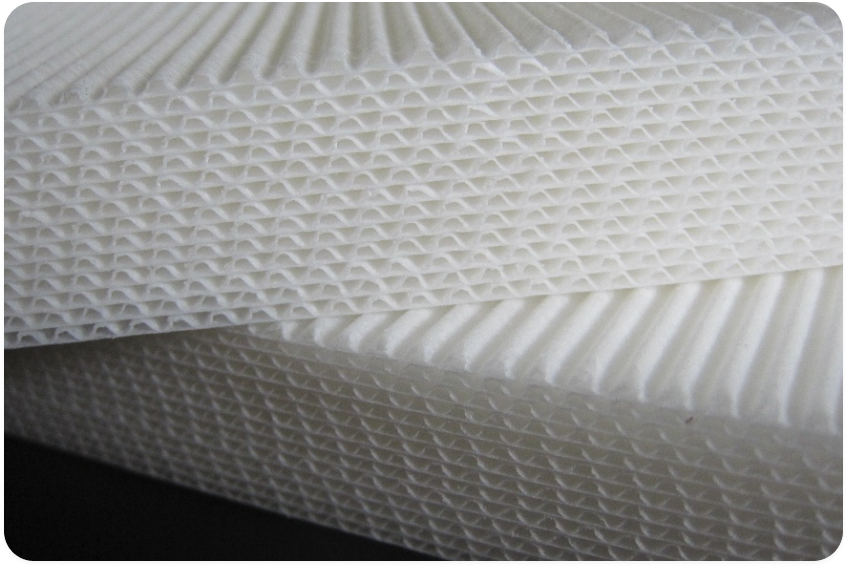
Same temperature, no humidity. Humicon features desiccant technology that helps maintain optimal humidity at 40%. It also includes air purification and ventilation functions, ensuring fresh and clean indoor air.
Huzero is an industrial dehumidifier designed for low-temperature and extremely low-humidity environments to improve factory productivity, offering energy efficiency 60% higher than existing market products.
Husheet is an innovative and patented technology, ultra-slim dehumidifier that can control humidity as well as deodorizing. It also has dehumidifying, deodorizing, antibacterial, and anti-fungal functions.
Protect your valuable clothes and belongings from humidity with Huspot, a desiccant dehumidifier designed specifically for dressing rooms in your home. Huspot effectively removes moisture from bathrooms and other areas using advanced desiccant technology, and safely release the humidity outside. Therefore, it is not neccessary to empty a water tank, install pipes, or worry about water leaks. Huspot can be installed on the ceiling, allowing you to maximize the use of your dressing room space while maintaining an optimal humidity level for your clothes and accessories. Keep your dressing room fresh and humidity-free with Huspot.


